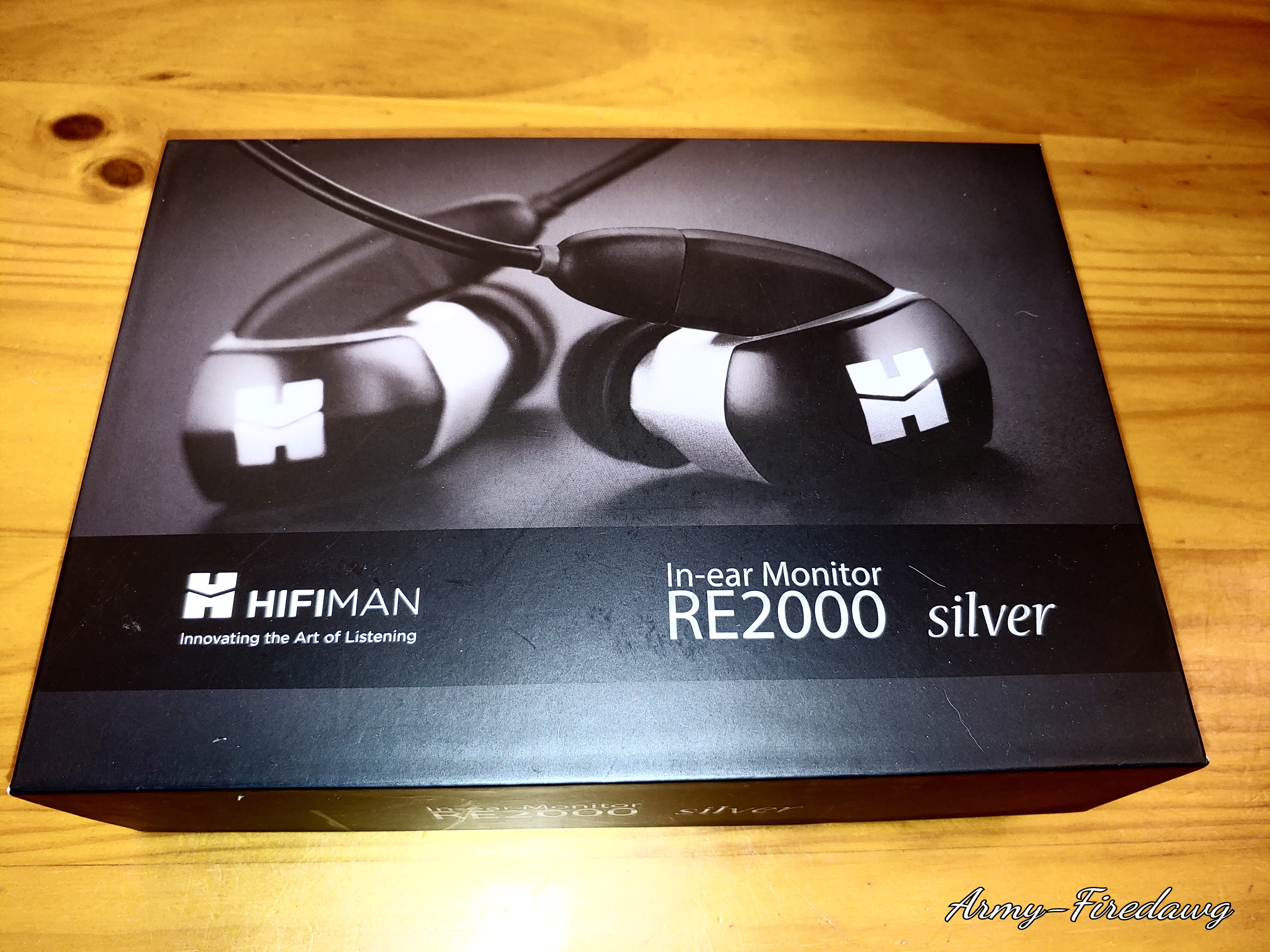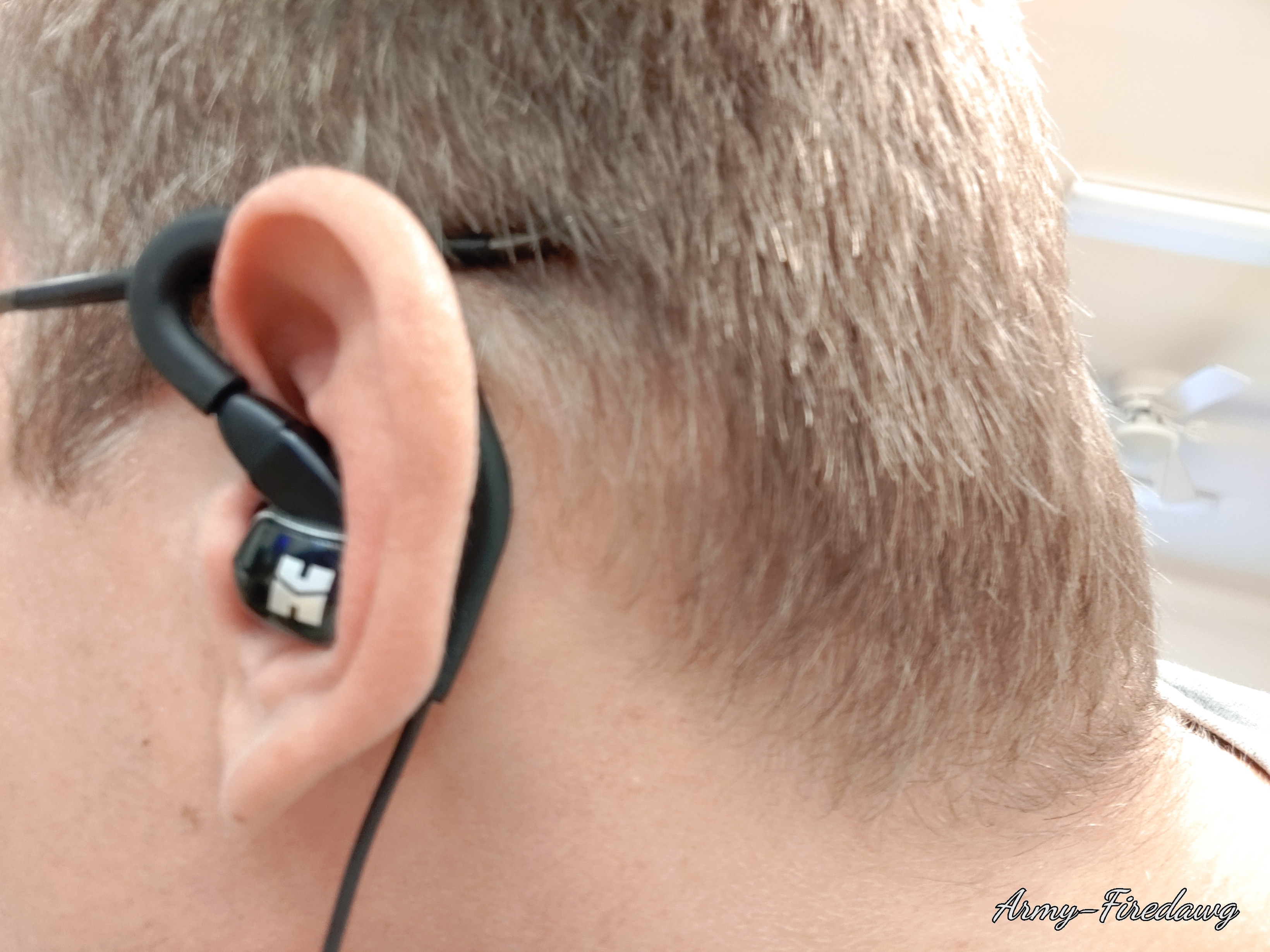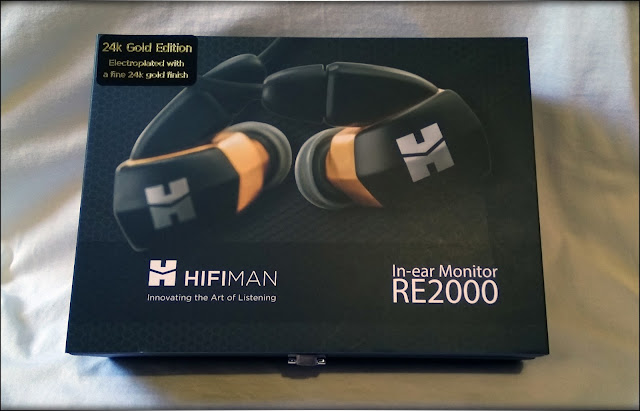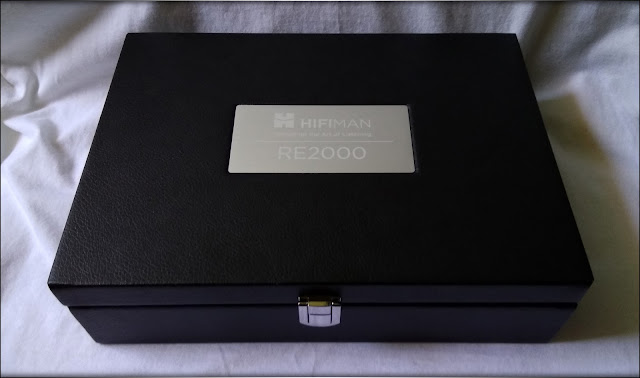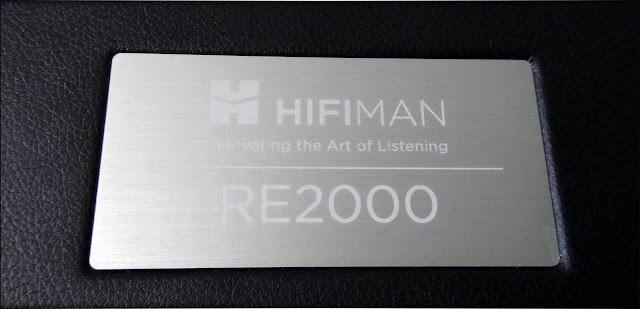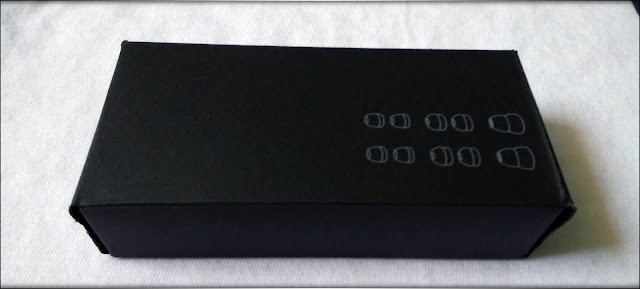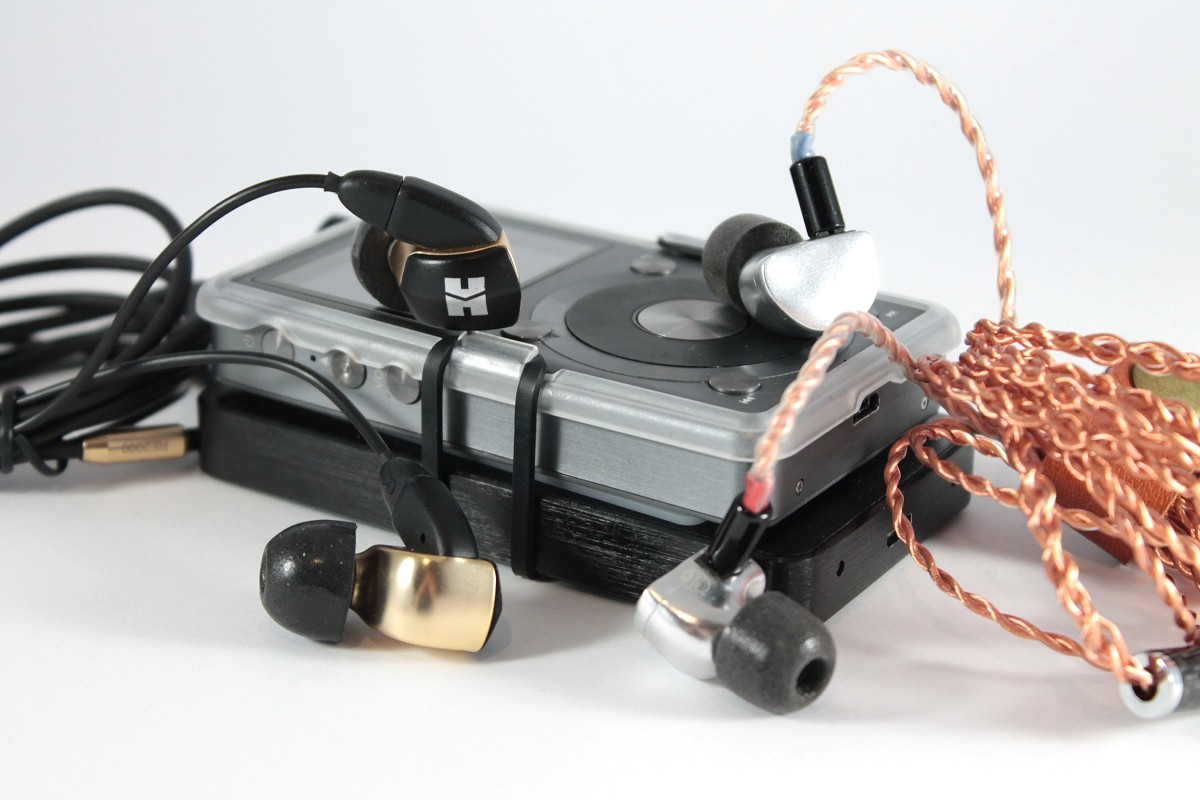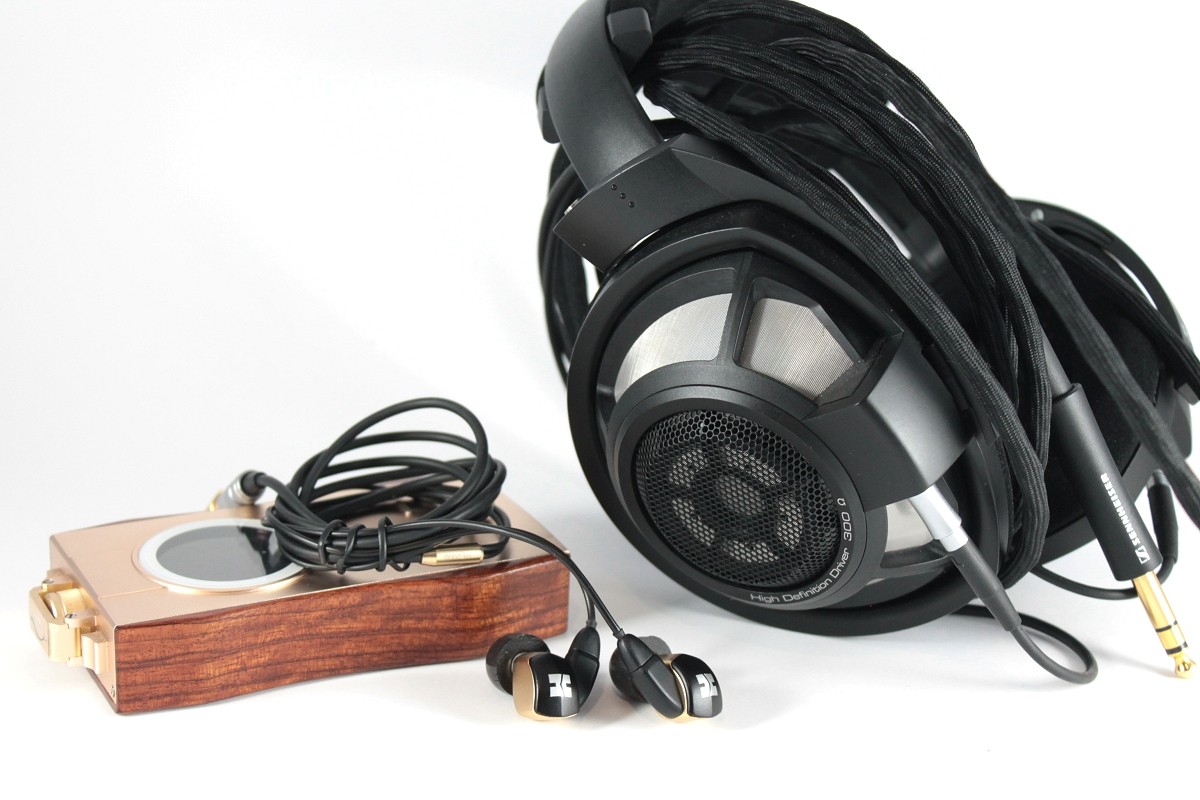Link to my review and measurement index thread where one can also find a full review overview, more information about myself as well as my general-ish audio and review manifesto: https://www.head-fi.org/threads/956208/
I only give full stars. My ranking/scoring system does not necessarily follow the norm and is about as follows:
5 stars: The product is very good and received the "highly recommended" award from me.
4 stars: The product is very good and received the "recommended" award from me.
3 stars: The product is good/very good, but not outstanding/special enough to get any of my two awards. ["Thumbs Up"]
2 stars: The product is only about average or even somewhat below that and somewhat flawed/flawed in some areas. [neither "Thumbs Up" nor "Thumbs Down"]
1 star: The product is bad/severely flawed to outright bad. ["Thumbs Down"]
HiFiMan RE2000
Source:
Review sample.
Miscellaneous:
Fairly impressive and abundant unboxing experience, but anything less would be disappointing at the fairly high price point (for single dynamic driver in-ears) anyway. The product photo on the box’s sleeve doesn’t fully fit in, though (regarding lightning and focus).
I like the large, hinged, pleather-coated storage chest with a metallic badge on the outside that they come in; it somehow reminds me of that of my Sennheiser HD 800.
Removing the outer cardboard sleeve (without ripping it apart) turned out to be somewhat difficult, though.
Fairly poor selection of ear tips, especially given the price (various styles of tips, but only one respectively two choices as for size).
Gold-plated shells (on the inner half). The outside with the HiFiMan logo, though, appears like it could lose its colour over time (it would have been better if the logos had been engraved or laser-etched).
Unique shell design. Rather bulky. The nozzles are on the shorter side which results in a fairly shallow fit.
Worn with the cables around the ears.
The RE2000 are HiFiMan’s first IEMs with detachable cables; thankfully they went with the 2-pin standard (recessed sockets) instead of the more fragile MMCX.
Interestingly, the cable comes with a set of spare 2-pin connectors.
Nicely soft and supple but also slightly sticky and rubbery on the surface; the strain relief could be executed better on some of the transitions. Doesn’t really appear (in terms of aesthetics) suitable for $2000 in-ears (despite the gold-plated elements on it), but is still good enough for a cable with non-braided/-twisted conductors.
Fairly nice aluminium carrying case that is rubber-padded on the inside and therefore protective.
One dynamic driver per side.

Sound:
Largest included triple-flange ear tips trimmed down to large single-flange ear tips that have the same length as the grey double-flange tips that came already installed on the RE2000. Due to the same length, acoustic measurements indicate them to sound identical.
Tonality:
As for tonality, “balanced” is probably what comes closest to the RE2000s’ tuning.
The bass is emphasised by ca. 6.5 dB to my ears compared to the Etymotic ER-4S/ER4SR but sounds subjectively as if it were more present which is however not the case as it turned out when adjusting it using EQ software; perhaps it is the larger driver and longer decay that leads to this impression.
Extension into the real sub-bass is good with just a slight drop below 40 Hz. As the lows start to climb already around 900 Hz and reach their climax already around 400 Hz, lower mids and fundamentals are on the fuller side and there is some undeniable fundamental range bloom that can turn from pleasant, cosy warmth into being somewhat annoying at times; nonetheless the timbre in the vocal range is still good and relatively natural thanks to the treble being on the generally brighter side.
That said, there is really nothing to be really criticised about the midrange – while not focussing on pure flatness, it sounds natural with some added lower midrange warmth, a slight central midrange bump that brings voices a little closer to the listener, a slightly reduced fundamental range, and an elevated middle and upper treble that compensates for the warmth.
When it comes to the highs, though, this is definitely the area where the RE2000s’ biggest problem is located: performing sine sweeps, I can hear elevations around 5 kHz, 7 kHz and around 12 kHz, each increasing in quantity. While they are rather wide and spread instead of narrow wherefore sharpness and harshness are thankfully avoided, the trebles sounds artificial and has a metallic timbre as a result; especially the 5 kHz elevation is responsible for this and also leads to trumpets and cymbals sounding off (squeaky respectively as if they were played with brushed instead of sticks (to which the 11 kHz elevation definitely also contributes)).
Surely there are in-ears at lower price points that sound even more artificial in the highs – but at $2000, the RE2000s’ treble presentation is just too far off from a realistic sound reproduction, as while it doesn’t sound bad per se, music that mainly incorporates real acoustic instruments and no drum machines and sampling does just not sound realistic but plasticky. At this price point and for much less money, there are so many other superiorly (more realistically) tuned alternatives, including dynamic driver in-ears (even such as HiFiMan’s own RE4000i).
Super treble extension past 10 kHz is flawless.
Frequency Response:

ER-4S-Compensation
Performing sine sweeps and EQ comparisons, I hear the bass as somewhat stronger (ca. 6.5 dB instead of the ~ 5 dB that are shown), with another peak around 7 kHz. Otherwise, that’s about how I perceive the RE2000 as well.

ProPhile 8-Compensation
Resolution:
As for technicalities, the RE2000 are indeed convincing for dynamic driver in-ears, but not really worthy of the $2000 that they cost.
Not much surprisingly for single-driver in-ears, coherence is flawless, but should also be expected at this price point no matter whether hybrid, single- or multi-driver in-ears are talked about.
Speed and control with complex and really fast recordings are very good for dynamic driver standards and a good bit ahead of my HE4000i but not fully on the same level when compared to good multi-BA in-ears.
Since one dynamic driver per side is used, the focus is perhaps naturally not on pure BA-like speed and nimbleness anyway, though, but more on body, the perceived tactile sensation of the dynamic drivers and rumble. And this is where the RE2000 really shine, with a rumbling but highly controlled bass whose tactile perception is especially high, as if the moved air and mass could be perceived physically, even down into the real sub-bass. As such, their bass presentation reminds me somewhat of that of my Audeze LCD-X that also have that rumbling texture while being highly controlled and still very fast at the same time, but ultimately the HiFiMan and my Audeze are still different enough in terms of bass presentation and the LCD-X impress even a good bit more here, but for dynamic driver in-ears, the RE2000 are very good and are, among those that I have heard, probably those that come closest to my LCD-X in this regard.
Treble separation is on a high level as well and comes close to that of my UERM, although they are ultimately more pin-point precise than the HiFiMan in-ears.
Speech intelligibility and midrange details are on a very high level to the point of being transparent, with small variations and fine details being heard precisely.
Ultimately, in terms of technicalities, the RE2000 deliver about Ultimate Ears Reference Remastered to-go performance, perhaps a step below them, which definitely places them on a high level, however they are therefore, as a result, also not on the same level as in-ears such as my Campfire Audio Andromeda, InEar ProPhile 8 or the NocturnaL Audio Atlantis. Therefore, while fairly impressive for dynamic driver standards, compared to the multi-BA competition, the RE2000 appear priced too high.
Soundstage:
The perceived soundstage is convincing as well but mainly a derivation of the tuning; the portrayed sound field is fairly large and as such leaves the base of my head towards the sides quite easily, almost to the point of reaching the perceived size of some full-sized headphones.
Ultimately it feels somewhat wider than deep to me, with an overall slightly oval presentation. Height cues seem to be reproduced as well.
Imaging seems to be precise.
- - - - - - - - - - - -
Comparisons:
Ultimate Ears Reference Monitors:
As for tuning, the UERM are clearly more neutral and realistic.
In terms of technicalities, it is quite remarkable how close the RE2000 come in terms of bass speed and tightness but at the same time present the lows totally differently, with a slightly longer decay but especially more rumbling, “tactile” sensation and layering; it’s just that “dynamic driver texture” that adds a pleasantly unique character and flavour to them.
Ultimately, the UERM are a bit superior in reproducing small midrange details.
Treble separation is almost a draw but the UERM are in the end also a bit more precise in busy and complex passages when it comes to separating single notes.
The RE2000 have a somewhat wider soundstage to my ears that appears somewhat deeper as well wherefore their presentation is more open.
In terms of instrument separation, the UER are somewhat cleaner when busier and more demanding recordings are played.
Sennheiser IE 800:
The IE 800 have a clearly more fun-oriented sound signature and feature the noticeably stronger v-shape with an audibly stronger bass and especially sub-bass and a more forward, more sparkling upper treble, but compensate for this with a dip in the middle highs around 5 kHz that generates enough headroom and compensation for the follow-up peak.
The IE 800’s mids are more relaxed due to a more recessed upper midrange.
Cymbals sound splashier and brighter on the Sennheiser and are therefore sharper, but the RE2000, while not sharp but milder, present them more metallically and appear to be more off in the highs (fun tuning on purpose on the IE 800 compared to a moderately brightness-elevated but more plasticky tuning on the HiFiMan).
While the IE 800 are definitely competent for single dynamic driver IEMs, the RE2000 are overall a step up and feature a somewhat tighter and faster bass, with somewhat more precise treble separation and superior midrange resolution.
To my ears, the IE 800s’ soundstage is even slightly wider but, in contras to the HiFiMan, with almost no spatial depth.
Instrument separation is cleaner and more precise on the HiFiMan.
HiFiMan RE400i:
The RE400i feature the more neutral, realistic (i.e. accurate) tuning in the midrange and highs but are also somewhat on the warmer side in the lows compared to diffuse-field standards.
When it comes to technical performance, the RE2000 are audibly quite a step up and sound faster, tighter, better controlled and render minute details more precisely.
The RE2000s’ soundstage is larger in all directions, with more precise imaging.

Conclusion:
The RE2000 are very good when it comes to technical qualities, especially for dynamic driver standards (although definitely not $2000 good compared to the multi-BA competition) and feature a nicely tactile reproduction of lower notes’ rumble, but are clearly flawed in the treble tuning that leads to an unnatural presentation of real instruments. When it comes to accessories and build quality/perceived value, there are areas for improvement as well.
Photos:


I only give full stars. My ranking/scoring system does not necessarily follow the norm and is about as follows:
5 stars: The product is very good and received the "highly recommended" award from me.
4 stars: The product is very good and received the "recommended" award from me.
3 stars: The product is good/very good, but not outstanding/special enough to get any of my two awards. ["Thumbs Up"]
2 stars: The product is only about average or even somewhat below that and somewhat flawed/flawed in some areas. [neither "Thumbs Up" nor "Thumbs Down"]
1 star: The product is bad/severely flawed to outright bad. ["Thumbs Down"]
HiFiMan RE2000
Source:
Review sample.
Miscellaneous:
Fairly impressive and abundant unboxing experience, but anything less would be disappointing at the fairly high price point (for single dynamic driver in-ears) anyway. The product photo on the box’s sleeve doesn’t fully fit in, though (regarding lightning and focus).
I like the large, hinged, pleather-coated storage chest with a metallic badge on the outside that they come in; it somehow reminds me of that of my Sennheiser HD 800.
Removing the outer cardboard sleeve (without ripping it apart) turned out to be somewhat difficult, though.
Fairly poor selection of ear tips, especially given the price (various styles of tips, but only one respectively two choices as for size).
Gold-plated shells (on the inner half). The outside with the HiFiMan logo, though, appears like it could lose its colour over time (it would have been better if the logos had been engraved or laser-etched).
Unique shell design. Rather bulky. The nozzles are on the shorter side which results in a fairly shallow fit.
Worn with the cables around the ears.
The RE2000 are HiFiMan’s first IEMs with detachable cables; thankfully they went with the 2-pin standard (recessed sockets) instead of the more fragile MMCX.
Interestingly, the cable comes with a set of spare 2-pin connectors.
Nicely soft and supple but also slightly sticky and rubbery on the surface; the strain relief could be executed better on some of the transitions. Doesn’t really appear (in terms of aesthetics) suitable for $2000 in-ears (despite the gold-plated elements on it), but is still good enough for a cable with non-braided/-twisted conductors.
Fairly nice aluminium carrying case that is rubber-padded on the inside and therefore protective.
One dynamic driver per side.
Sound:
Largest included triple-flange ear tips trimmed down to large single-flange ear tips that have the same length as the grey double-flange tips that came already installed on the RE2000. Due to the same length, acoustic measurements indicate them to sound identical.
Tonality:
As for tonality, “balanced” is probably what comes closest to the RE2000s’ tuning.
The bass is emphasised by ca. 6.5 dB to my ears compared to the Etymotic ER-4S/ER4SR but sounds subjectively as if it were more present which is however not the case as it turned out when adjusting it using EQ software; perhaps it is the larger driver and longer decay that leads to this impression.
Extension into the real sub-bass is good with just a slight drop below 40 Hz. As the lows start to climb already around 900 Hz and reach their climax already around 400 Hz, lower mids and fundamentals are on the fuller side and there is some undeniable fundamental range bloom that can turn from pleasant, cosy warmth into being somewhat annoying at times; nonetheless the timbre in the vocal range is still good and relatively natural thanks to the treble being on the generally brighter side.
That said, there is really nothing to be really criticised about the midrange – while not focussing on pure flatness, it sounds natural with some added lower midrange warmth, a slight central midrange bump that brings voices a little closer to the listener, a slightly reduced fundamental range, and an elevated middle and upper treble that compensates for the warmth.
When it comes to the highs, though, this is definitely the area where the RE2000s’ biggest problem is located: performing sine sweeps, I can hear elevations around 5 kHz, 7 kHz and around 12 kHz, each increasing in quantity. While they are rather wide and spread instead of narrow wherefore sharpness and harshness are thankfully avoided, the trebles sounds artificial and has a metallic timbre as a result; especially the 5 kHz elevation is responsible for this and also leads to trumpets and cymbals sounding off (squeaky respectively as if they were played with brushed instead of sticks (to which the 11 kHz elevation definitely also contributes)).
Surely there are in-ears at lower price points that sound even more artificial in the highs – but at $2000, the RE2000s’ treble presentation is just too far off from a realistic sound reproduction, as while it doesn’t sound bad per se, music that mainly incorporates real acoustic instruments and no drum machines and sampling does just not sound realistic but plasticky. At this price point and for much less money, there are so many other superiorly (more realistically) tuned alternatives, including dynamic driver in-ears (even such as HiFiMan’s own RE4000i).
Super treble extension past 10 kHz is flawless.
Frequency Response:
ER-4S-Compensation
Performing sine sweeps and EQ comparisons, I hear the bass as somewhat stronger (ca. 6.5 dB instead of the ~ 5 dB that are shown), with another peak around 7 kHz. Otherwise, that’s about how I perceive the RE2000 as well.
ProPhile 8-Compensation
Resolution:
As for technicalities, the RE2000 are indeed convincing for dynamic driver in-ears, but not really worthy of the $2000 that they cost.
Not much surprisingly for single-driver in-ears, coherence is flawless, but should also be expected at this price point no matter whether hybrid, single- or multi-driver in-ears are talked about.
Speed and control with complex and really fast recordings are very good for dynamic driver standards and a good bit ahead of my HE4000i but not fully on the same level when compared to good multi-BA in-ears.
Since one dynamic driver per side is used, the focus is perhaps naturally not on pure BA-like speed and nimbleness anyway, though, but more on body, the perceived tactile sensation of the dynamic drivers and rumble. And this is where the RE2000 really shine, with a rumbling but highly controlled bass whose tactile perception is especially high, as if the moved air and mass could be perceived physically, even down into the real sub-bass. As such, their bass presentation reminds me somewhat of that of my Audeze LCD-X that also have that rumbling texture while being highly controlled and still very fast at the same time, but ultimately the HiFiMan and my Audeze are still different enough in terms of bass presentation and the LCD-X impress even a good bit more here, but for dynamic driver in-ears, the RE2000 are very good and are, among those that I have heard, probably those that come closest to my LCD-X in this regard.
Treble separation is on a high level as well and comes close to that of my UERM, although they are ultimately more pin-point precise than the HiFiMan in-ears.
Speech intelligibility and midrange details are on a very high level to the point of being transparent, with small variations and fine details being heard precisely.
Ultimately, in terms of technicalities, the RE2000 deliver about Ultimate Ears Reference Remastered to-go performance, perhaps a step below them, which definitely places them on a high level, however they are therefore, as a result, also not on the same level as in-ears such as my Campfire Audio Andromeda, InEar ProPhile 8 or the NocturnaL Audio Atlantis. Therefore, while fairly impressive for dynamic driver standards, compared to the multi-BA competition, the RE2000 appear priced too high.
Soundstage:
The perceived soundstage is convincing as well but mainly a derivation of the tuning; the portrayed sound field is fairly large and as such leaves the base of my head towards the sides quite easily, almost to the point of reaching the perceived size of some full-sized headphones.
Ultimately it feels somewhat wider than deep to me, with an overall slightly oval presentation. Height cues seem to be reproduced as well.
Imaging seems to be precise.
- - - - - - - - - - - -
Comparisons:
Ultimate Ears Reference Monitors:
As for tuning, the UERM are clearly more neutral and realistic.
In terms of technicalities, it is quite remarkable how close the RE2000 come in terms of bass speed and tightness but at the same time present the lows totally differently, with a slightly longer decay but especially more rumbling, “tactile” sensation and layering; it’s just that “dynamic driver texture” that adds a pleasantly unique character and flavour to them.
Ultimately, the UERM are a bit superior in reproducing small midrange details.
Treble separation is almost a draw but the UERM are in the end also a bit more precise in busy and complex passages when it comes to separating single notes.
The RE2000 have a somewhat wider soundstage to my ears that appears somewhat deeper as well wherefore their presentation is more open.
In terms of instrument separation, the UER are somewhat cleaner when busier and more demanding recordings are played.
Sennheiser IE 800:
The IE 800 have a clearly more fun-oriented sound signature and feature the noticeably stronger v-shape with an audibly stronger bass and especially sub-bass and a more forward, more sparkling upper treble, but compensate for this with a dip in the middle highs around 5 kHz that generates enough headroom and compensation for the follow-up peak.
The IE 800’s mids are more relaxed due to a more recessed upper midrange.
Cymbals sound splashier and brighter on the Sennheiser and are therefore sharper, but the RE2000, while not sharp but milder, present them more metallically and appear to be more off in the highs (fun tuning on purpose on the IE 800 compared to a moderately brightness-elevated but more plasticky tuning on the HiFiMan).
While the IE 800 are definitely competent for single dynamic driver IEMs, the RE2000 are overall a step up and feature a somewhat tighter and faster bass, with somewhat more precise treble separation and superior midrange resolution.
To my ears, the IE 800s’ soundstage is even slightly wider but, in contras to the HiFiMan, with almost no spatial depth.
Instrument separation is cleaner and more precise on the HiFiMan.
HiFiMan RE400i:
The RE400i feature the more neutral, realistic (i.e. accurate) tuning in the midrange and highs but are also somewhat on the warmer side in the lows compared to diffuse-field standards.
When it comes to technical performance, the RE2000 are audibly quite a step up and sound faster, tighter, better controlled and render minute details more precisely.
The RE2000s’ soundstage is larger in all directions, with more precise imaging.
Conclusion:
The RE2000 are very good when it comes to technical qualities, especially for dynamic driver standards (although definitely not $2000 good compared to the multi-BA competition) and feature a nicely tactile reproduction of lower notes’ rumble, but are clearly flawed in the treble tuning that leads to an unnatural presentation of real instruments. When it comes to accessories and build quality/perceived value, there are areas for improvement as well.
Photos:

